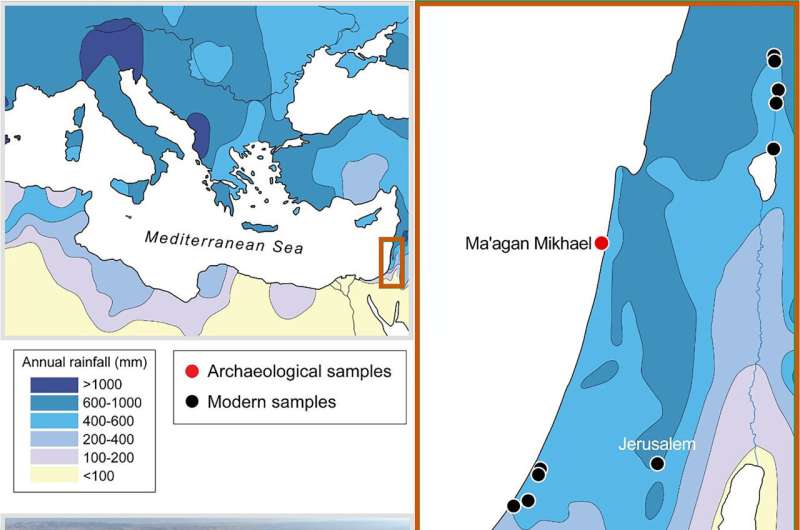April 19, 2023 report
This article has been reviewed according to Science X's editorial process and policies. Editors have highlighted the following attributes while ensuring the content's credibility:
fact-checked
peer-reviewed publication
trusted source
proofread
Ancient DNA reveals commercial viticulture in Byzantine and Early Islamic settlements

Researchers in Israel led by Tel Aviv University have uncovered commercial-scale viticulture in ancient Byzantine and Early Islamic settlements dated to the 4th to the 9th centuries. In a paper, "Ancient DNA from a lost Negev Highlands desert grape reveals a Late Antiquity wine lineage," published in the Proceedings of the National Academy of Sciences, the researchers link the ancient varieties to grapes grown in modern-day Greece and the southern Levant.
Excavations in the Negev Highlands of southern Israel found that the ancient cultivators could continuously produce a wide variety of grapes in an arid environment over centuries.
Target-enriched, genome-wide sequencing and radiocarbon dating were used to examine grapevine pips excavated at three sites. The genetically diverse pips provided clues to ancient cultivation strategies to improve agricultural productivity and ensure food security in a challenging environment.
The samples were processed in dedicated aDNA (ancient DNA) facilities at Tel Aviv University, the University of Copenhagen, and the University of York. Applying genomic prediction analysis to the aDNA results, researchers were able to date the oldest pip to the 8th century CE.
Another pip was found to be related to a modern Greek variety and was linked with several historic wines that were once traded across the Byzantine Empire. These findings shed light on historical Byzantine trading networks and the genetic contribution of Levantine varieties to the classic Aegean landscape.
The authors point out that of the thousands of winemaking grape varieties, only 11 cultivars of European origin (Cabernet Sauvignon, Chasselas, Chardonnay, Grenache, Merlot, Monastrell, Pinot Noir, Riesling, Sauvignon Blanc, Syrah, and Ugni Blanc) cover more than a third of the winemaking vineyards worldwide. These select grapes are grown over relatively narrow geographic zones under specific climatic conditions, which the authors suggest exposes the winemaking industry to stressors like global warming.
The paper cites a 2020 study, "Diversity buffers winegrowing regions from climate change losses" also published in PNAS, which found that a rise of 2°C in worldwide median temperatures would devastate grapevine cultivation in more than half of the current winegrowing areas. Though that study does illustrate how diversifying varieties or growing in entirely different regions (or countries) could mitigate much of that loss, it is an increasingly looming threat to viticulture that the climate cultivators have relied on for centuries is quickly changing.
In looking at the ancient pips grown in arid climates, the study authors suggest endemic grapevine lineages bred in hot and arid regions, often preserved over centuries, may present an alternative to the classic winemaking grape cultivars.
More information: Pnina Cohen et al, Ancient DNA from a lost Negev Highlands desert grape reveals a Late Antiquity wine lineage, Proceedings of the National Academy of Sciences (2023). DOI: 10.1073/pnas.2213563120
Journal information: Proceedings of the National Academy of Sciences
© 2023 Science X Network




















